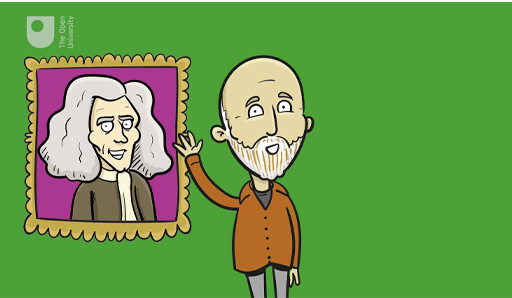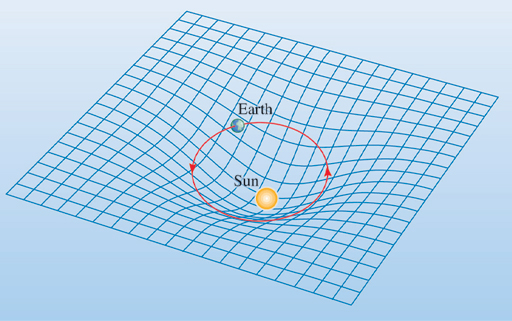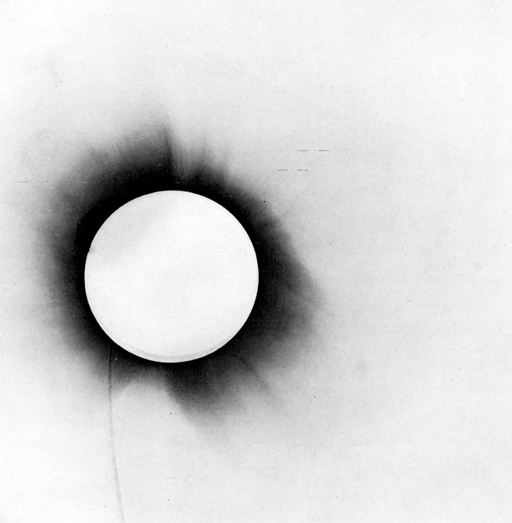5 Curved space and gravity
Einstein saw that if motion through space affects measurements of time, then space and time must no longer be considered separate. In modern physics, space and time are now regarded as being two aspects of a four-dimensional entity called ‘spacetime’. Spacetime has three dimensions of space, and one of time.
Keep in mind though, this doesn’t mean that space and time are equivalent – there is a common misconception that time is a ‘fourth dimension’ of space – but rather that they intermingle with one other. Special relativity says that space and time are still different ‘things’ but what appears to you as time may appear to someone else as space, and vice versa, depending on how you are moving. If that wasn’t enough, Einstein went much, much further. In 1915 he published his theory of general relativity, which was an attempt to explain gravity.
In special relativity, spacetime is flat, rather like a sheet. As you saw last week, general relativity tells us that space can be curved, and the curvature is what we perceive as gravity. Mass distorts spacetime, curving the space in its vicinity.
In light of this, Earth orbits the Sun not because the Sun is pulling on the Earth, but because the Sun is curving the space around it so that the Earth follows a closed orbit rather than a straight line. The Earth is responding to the local curvature of space – not a pull from a distant Sun. Here’s Marcus to discuss these developments in our understanding.

Transcript: Video 5 Curved spacetime (part 1)
Evidence for general relativity came quickly. Einstein predicted that light from distant stars passing through the curved space close to the Sun would be bent, making the stars appear to be further from the Sun than they really are. But in terms of verifying this prediction, the Sun is so bright that stars cannot be seen anywhere near it – except during a total eclipse, when the Sun is completely covered by the Moon.
Sir Arthur Eddington, a prominent astrophysicist of the day, led a project to measure this tiny displacement during the total eclipse of 29 May 1919, when stars became briefly visible in the darkened sky close to the Sun. Figure 5 shows a photographic negative taken by Eddington’s team. The white disc is the Moon covering the Sun. The two stars indicated by faint horizontal lines are among those seen to be displaced by the curvature of space. Eddington’s results matched Einstein’s prediction, as has every other test of general relativity in the 100 years since.


